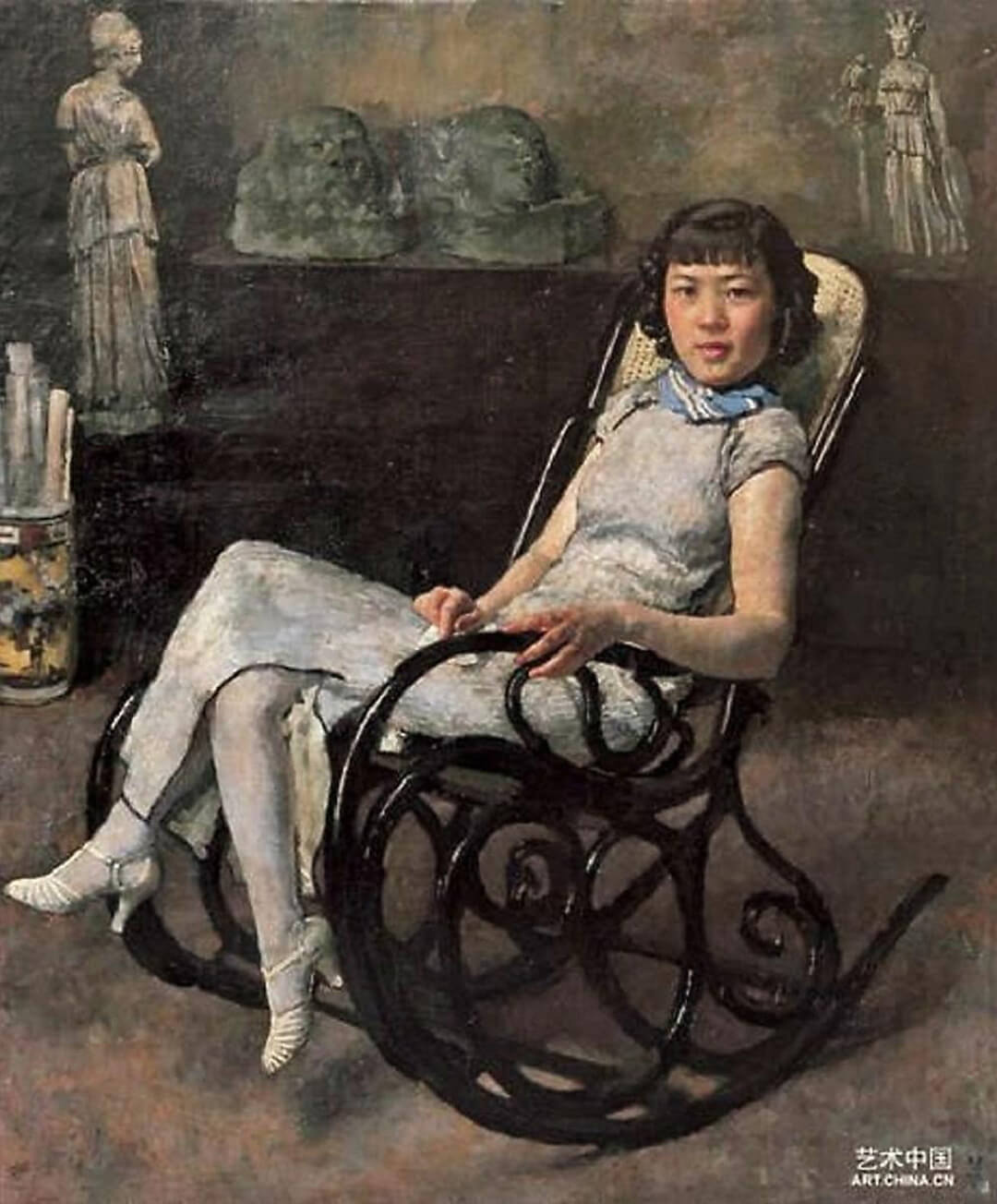It most certainly happened in Xu Beihong’s studio. Considering the dates: probably sometime between 1931 and the start of the Second Sino-Japanese War, perhaps in 1936. Looking at Sun Duoci’s clothing, it was summer. Sun, the girl portrayed by the famous painter Xu Beihong, was herself a painter. She was his pupil. And she was having an affair with him. It would be nice to fantasize about the circumstances surrounding this painting. Xu, deciding where to place the easel, Sun making herself comfortable in a rocking chair. But we have other details to ponder.
The studio of a Chinese painter, with a Greek statue in the background.
Objects stand out in the background. Bottom left: a porcelain vase, but that’s unsurprising since we’re in 1930s China. But there on a sideboard: a statuette of Athena, the Greek goddess of Wisdom, protector of the city Athens, about 8,000 kilometers from Xu Beihong’s studio in Nanjing. And even if it’s made of plaster and not marble, it appears to be centuries away from its original era. It likely didn’t spend all that time yellowing on that sideboard, though.
Where will the items in our pockets age? .
The Journal’s Time Machine has touched on its third contemporary Asian artwork. In fact, just as these works speak to each other over a distance, even those objects we touch every day, on a small, sometimes minute scale, take part in these epoch-spanning conversations between humans, and dialogues between their continents. Who knows how the item in our pockets will age? If one day it might end up in the background of a painting on the other side of the world. Il Bisonte has always placed great hopes in these connections.
